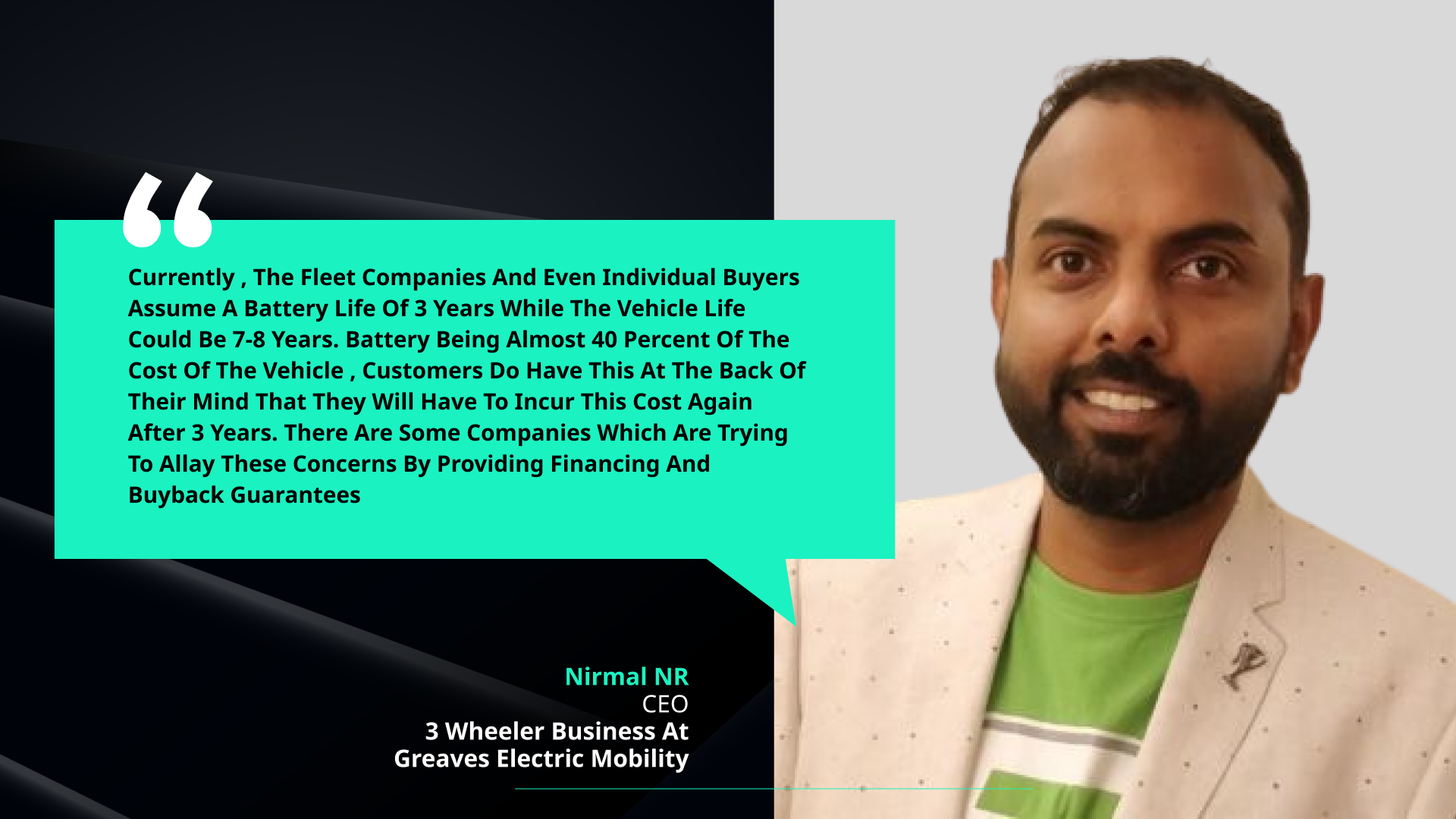In an engaging and enlightening Q&A session, we had the privilege of discussing key topics with Mr Nirmal, Chief Executive Officer - 3 wheeler Business of Greaves Electric Mobility. Our questionnaire revolved around the dynamic landscape of the electric vehicle (EV) industry in India and the significant strides being made towards a sustainable future.
With a wealth of experience and expertise in the electric mobility sector, Mr Nirmal graciously shared his insights on technological advancements, market penetration, government initiatives, benefits for economically weaker sections, battery technology advancements, and the role of events like the India eMobility Show in fostering industry growth.
Let's delve into the depths of Mr. Nirmal's expertise and uncover the valuable knowledge he imparts regarding the future of electric vehicles and their impact on Indian society.
#IES: How do you envision the future of the electric vehicle industry, particularly in terms of technological advancements and market penetration?
Mr Nirmal: The Indian electric vehicle industry is at an inflection point. Now , across the segments starting from 2W, 3W to 4 wheelers and large commercial vehicles , there are high quality products being launched by multiple local manufacturers. This is increasing the customer confidence in electric vehicles , which is what will result in high penetration across the segment. This is a huge difference from a time when electric vehicles were considered as low performing imported assembly kits. The market penetration as already visible would be different in different applications with the lighter commercial applications including last mile delivery and last mile mobility leading it.
#IES: What role can the government play in the growth of the electric vehicle industry, and what changes or improvements would you like to see in this regard?
Mr Nirmal: The governments have taken multiple initiatives including the FAME subsidy and PLI schemes which have helped improve the demand for electric vehicles. Some of the states have done more through state subsidies also, but some of them still don’t have clear policies. In case of 3 wheelers , there are many states , where it’s a huge task to get new 3w permits. This needs to be relaxed. We need consistent policies across the board to let new and innovative companies make strides in electric mobility.
#IES: How do electric three-wheelers bring value to the economically weaker sections of society who rely on them for their livelihoods, and what specific benefits do electric vehicles offer in terms of cost savings, income stability, and overall sustainability for these communities?
Mr Nirmal: With almost 8 lakh units being sold annually, 3 wheelers (e rickshaws included ) are a very important building block of last mile shared mobility and last mile logistics in India. A large portion of this is already electrified. The per Km running cost and the Total Cost of Operation (TCO) advantage due to low maintenance are already improving the livelihoods of these operators. We ourselves have customers who use our L5 cargo vehicle for deliveries in two shifts running almost 200 kms daily. This would mean that he is doubling their monthly income and almost getting the vehicle for free compared to an ICE vehicle. The only limitation at this point is that electric vehicles may not be suitable for all applications just yet. But I am sure it would change soon and this would be the norm rather than the exception.
#IES: What are your thoughts on battery technology advancements and their impact on the future of electric vehicles, including factors such as energy density, charging speed, and lifespan?
Mr Nirmal: The evolution of battery technology including energy density , faster charging , active cell balancing and swapping can significantly improve the already reasonable economics of an electric 3 wheeler.
With ranges close to 100km and charging times at 3-4 hrs for a L5 3 wheeler , it doesn’t really affect higher utilisations of the vehicle as the daily run is lower than the range, but if swapping or a very short 15 mins charging , it gives peace of mind to an operator that they will never lose revenue or earnings due to lack of charge.
Currently , the fleet companies and even individual buyers assume a battery life of 3 years while the vehicle life could be 7-8 years. Battery being almost 40 percent of the cost of the vehicle , customers do have this at the back of their mind that they will have to incur this cost again after 3 years. There are some companies which are trying to allay these concerns by providing financing and buyback guarantees. But if the lifespan of the battery itself matches or goes closer to that of the vehicle , that makes it very similar to a regular ICE vehicle. With similar or better residual value.
#IES: How do you believe events like the India eMobility Show can contribute to the growth and development of the electric vehicle industry in India?
Mr Nirmal: I have seen that many times , opportunities come through networks , deliberations and conversations. Events like this ensure that people of similar interests, but different skill sets including innovators , manufacturers , financiers and end users coming together will result in such deliberations and conversations which will result in new opportunities to grow and take the Indian electric mobility forward. I look forward to attending the event.

